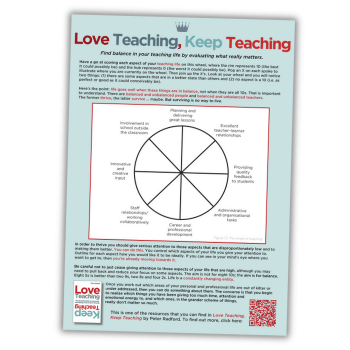Silent classroom – When (and when not) to use silence

The notion of the ‘silent classroom’ may have fallen out of favour in recent years, but well-managed periods of silence still have their place, says Adam Riches

- by Adam Riches
- Teacher, writer and educational consultant

The established tendency in contemporary teaching is to avoid all-silent classrooms. This is in favour of a more collegiate atmosphere where we encourage talk and discussion but carefully manage and control it.
This orthodoxy has gone on to shape many teachers’ classroom conduct and with it, students’ expectations when they enter the classroom. As a result, it’s easy to forget just how valuable ‘quiet time’ can be when we utilise it correctly.
So how should you look to use silence in your classroom, and what’s the most efficient way of making a class comfortable with the idea of working silently?
Silent classroom phases
Switching to phases of silence throughout a lesson can be a great way of giving learners a varied diet. While collaboration and talk partners can certainly be helpful for collective efficacy, silence allows students to apply their learning in order to see what they have retained or understood, and what they haven’t.
“It’s easy to forget just how valuable ‘quiet time’ can be when we utilise it correctly”
If we explain our reasoning behind switching to silent phases, then we should be able to build self-efficacy in our learners over time, so that they come to see for themselves just how significant and useful silent working can be.
Extended silence
Of course, it’s no secret that students will sit their final exams in silence. Suddenly dropping learners into situations of extended silence can affect their thinking processes if they’ve only ever had limited experience of it before. Anxiety, confusion and fear are feelings that all of us can encounter when placed in an unfamiliar situation, regardless of age.
Trending
By integrating short bursts of controlled silence in your classroom, you can help learners adapt to exam conditions and make them more familiar with an important aspect of the assessment process that they may well be worried about.
Visual indicators
When it comes to encouraging silence in your classroom, reach for those visual indicators. Clear, non-verbal gestures and your overall body language will be your most reliable tools and not only reduce the extraneous load for those working, but also enable you to set and maintain silent periods without having to raise your own voice.
Above all, we shouldn’t see silence as an old-fashioned, draconian measure for maintaining classroom discipline, but as an effective tool we can deploy when crafting a healthy and varied lesson experience.
Adam Riches is a teacher, education consultant and writer.










